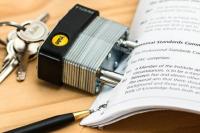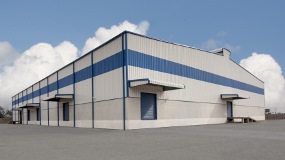What is an Agreement to Lease?
8 March, 2017 | Kristal Rogers
An Agreement to Lease is a binding contract between the landlord of a commercial property and a prospective tenant, outlining the basic details of the lease. It is a preliminary short form document, which is normally prepared by a commercial real estate agent.
An Agreement to Lease is a temporary document until a full lease is executed and contains only the basic information agreed on by the Landlord and Tenant, e.g. term of lease, rental and brief description of premises, and also any conditions or additional terms agreed to between the parties.
The Agreement to Lease is then sent to the Landlord’s lawyer for the Deed of Lease to be prepared using the information in the Agreement to Lease. The Deed of Lease will contain the full details of the lease.
Is an Agreement to Lease sufficient or do I really need the cost of a Deed of Lease?
The Agreement to Lease provides that the tenant will enter into a formal lease. You can continue the lease under the Agreement to Lease without a Deed of Lease. The Agreement to Lease provides if the lease has not been signed, the parties are bound by the provisions in the lease as if the lease had been signed. It can be a good idea to make sure that the Deed of Lease is signed before the commencement of the lease to prevent the risk that the Tenant does not sign the lease.
 What is the Agreement to Lease binding you to?
What is the Agreement to Lease binding you to?
Some agreements to lease include a clause stating that the tenant agrees to enter into either the Landlord’s standard form of lease, rather than a standard ADLS Deed of Lease. This binds the tenant to sign the longer, and more specific Deed of Lease, regardless of what it contains (so long as it is contractually reasonable).
As stated above the Agreement to Lease only covers the most important details, but those other details, like the level the tenant is responsible for reinstatement, who is responsible for certain costs (like legal fees), rent reviews are all covered in the Deed of Lease – so if you are a tenant, what are you agreeing to?
Negotiating a Deed of Lease after an Agreement to Lease has been signed
All negotiations should be completed by both parties and recorded in the Agreement to Lease.
Some favour the tenant some favour the landlord. Some favour the tenant in some areas, and the landlord in others. You want to end up with the best possible lease that you can get in the situation.
Negotiating the Deed of Lease when the Agreement to Lease has already been signed makes it difficult for both tenant and landlord. It can be time consuming and expensive. It can also affect the relationship between the Landlord and Tenant. It is likely both parties may find themselves having to compromise further points that they disagree with in order to end up with a mutually agreed Deed of Lease.
A party may claim if they had known before hand the full details of the lease, they would not have entered into the Agreement to Lease.

Is the Agreement to Lease the “top” document or the Deed of Lease?
If a Deed of Lease is signed by the party then the Deed of Lease is the “top” document.
When considering Agreement to Lease versus Deed of Lease, you can do without a Deed of Lease if you must. A well drafted Agreement to Lease is able to be enforced and incorporates the Deed of Lease terms.
Who are the parties to the Lease?
If you are signing an Agreement to Lease, it is important to ensure the correct party is signing – i.e. is it a trust (and therefore should be signed by trustees), is it a company (and should be signed by director(s)), or is it an individual?
If you are the landlord, who actually owns the building? (individual/company/trust?)
If you are the tenant, who do you want to be liable for the costs involved in leasing the building? You should consider the best legal vehicle for you to limit your liability, however, most landlords (if not all) will require a guarantor if the tenant is a company. What would be the best legal vehicle for you to limit your liability?
What should be included in the Agreement to Lease as a minimum?
As a minimum, the Agreement to Lease should include:
- A clearly defined description of the premises.
- The term of the Lease,
- the commencement date of the lease,
- what rights of renewal the Tenant has, the Renewal Date and the Final Expiry Date (These are all included in the First Schedule of the Agreement to Lease)
- The confirmed annual rent and outgoings. Are the outgoings in addition to the rental or included in the rental?. The percentage of the total outgoings and the estimated amount of the outgoings plus GST per annum if the outgoings are additional to the rent and what outgoings are paid by the tenant and what outgoings are paid by the Landlord. The rent reviews dates and the type of review, i.e. market rent review or CPI rent review, or a combination of both should be recorded.
- The business use needs to be clearly described.
- Type of insurance for the building held by the Landlord
- All Landlords fixtures, fittings, and chattels should be recorded in the Agreement to Lease.
A no access period is now a standard provision in the ADLS Agreement to Lease and Deed of Lease. This applies where the premises or part of the premises are destroyed or damaged which results in the Tenant being able to gain access to the premises for a period of time. This clause was inserted into the Lease provisions after the series of Christchurch earthquakes.
 Reviewing an Agreement to Lease before it is signed
Reviewing an Agreement to Lease before it is signed
Often, an Agreement to Lease is not reviewed by the tenants’ lawyer or the landlord’s lawyer prior to signing. This is a big risk to both parties.
Whether or not the parties intend to sign an Agreement to Lease or go straight to a Deed of Lease, all aspects of the leasing of the premises should be carefully considered and any Agreement to Lease or Deed of Lease should carefully reviewed by a skilled commercial property lawyer before the Tenant or the Landlord signs the document. They can advise you on the pitfalls, amendments, additions or deletions that would benefit you and provide clear wording to record their intention of both parties.
If you are a landlord and using a commercial real estate agent, your lawyer should review the lease documents before the property is advertised as available for lease. You want the Agreement to Lease document that is going to be given to potential tenants to reflect your wishes from the outset, then you negotiate once a tenant is interested in the premises.
If you are a tenant, you should request a copy of the Agreement to Lease and confirm the type of Deed of Lease from the leasing agent or the landlord and send this to your lawyer for review before signing. If the leasing agent is pressuring you to say that there are other interested tenants, find out what their deadline is and let your lawyer know when it needs to be reviewed by. The documents can be emailed, and reviewed without too much of a delay.


 What is the Agreement to Lease binding you to?
What is the Agreement to Lease binding you to?
 Reviewing an Agreement to Lease before it is signed
Reviewing an Agreement to Lease before it is signed

